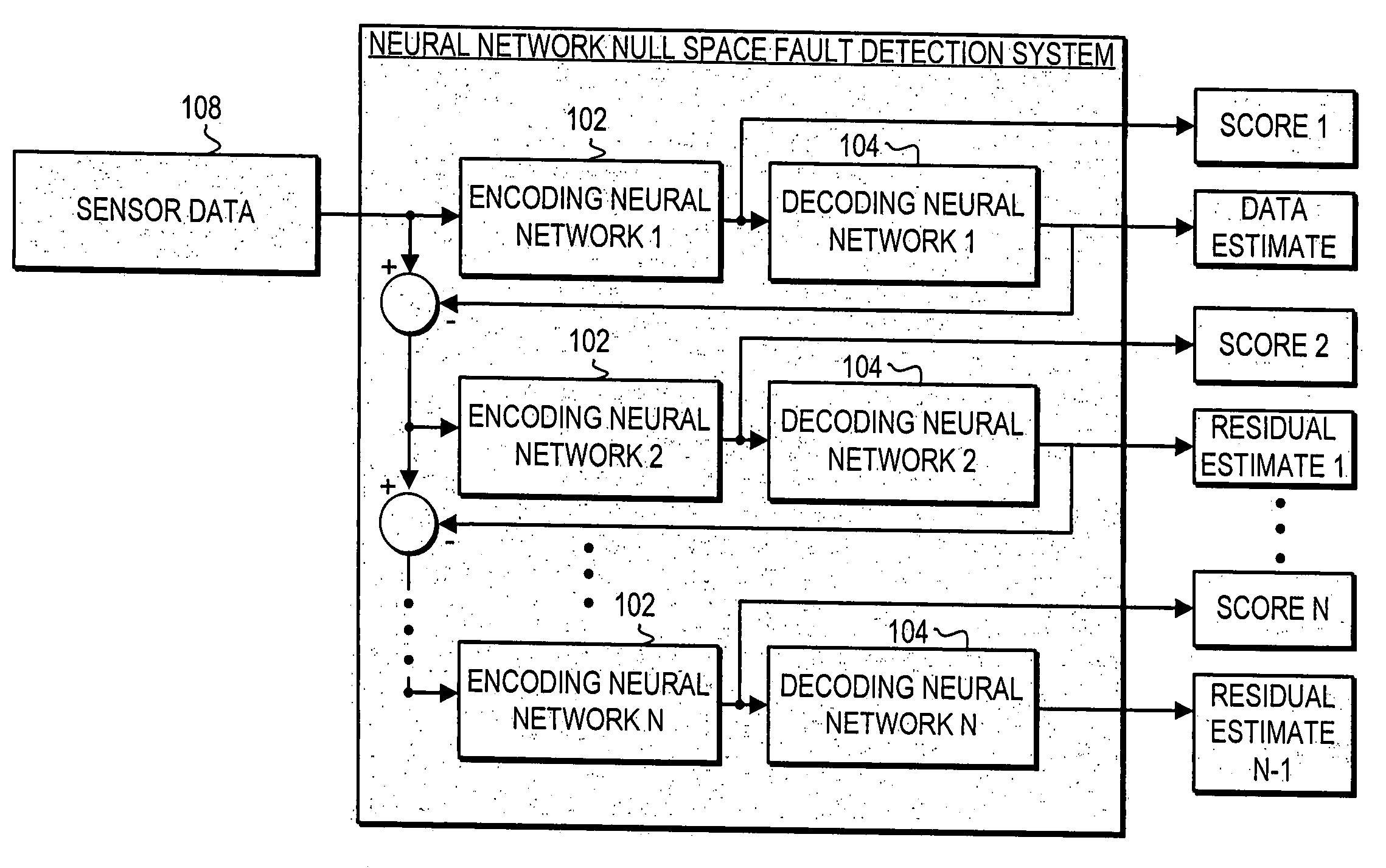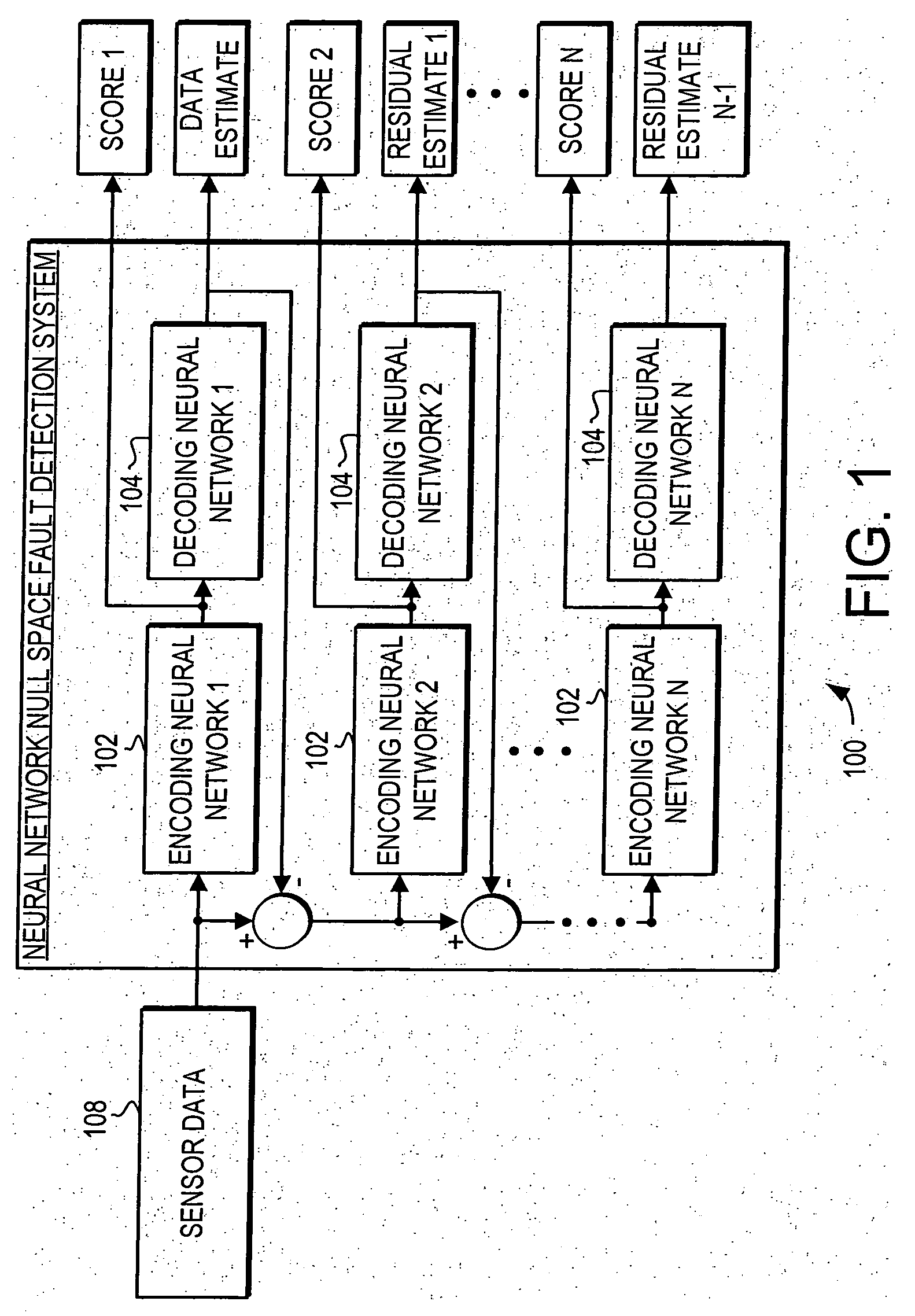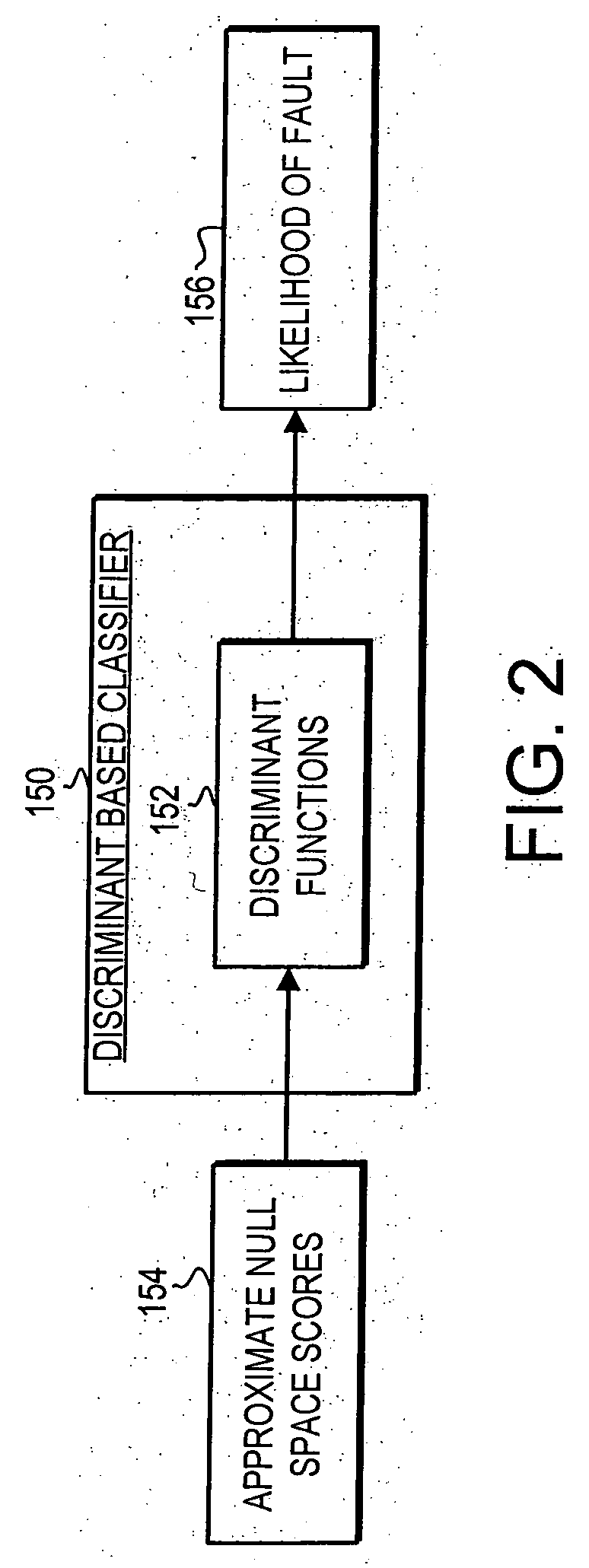Fault detection system and method using approximate null space base fault signature classification
a fault signature and fault detection technology, applied in the field of diagnostic systems, can solve the problems of increasing the need for automated fault detection systems, limited traditional engine fault detection, and complex modern aircraft, and achieve the effect of reliably detecting and classifying faults
- Summary
- Abstract
- Description
- Claims
- Application Information
AI Technical Summary
Benefits of technology
Problems solved by technology
Method used
Image
Examples
Embodiment Construction
[0016] The present invention provides a fault detection system and method. The fault detection system provides the ability to detect symptoms of fault in turbine engines and other mechanical systems that have nonlinear relationships among variables describing the system. The fault detection system uses a neural network to perform a data representation and feature extraction where the extracted features are analogous to eigen vectors derived from eigen decomposition of the covariance matrix of the data. The extracted features, referred to herein as scores, are then used to determine the likelihood of fault in the system. Specifically, the lower order scores, referred to herein as “approximate null space” scores can form one or more clusters, where some clusters represent types of faults in the turbine engine. Classification based on the approximate null space scores provides the ability to classify fault signatures that could not be reliably classified using higher order scores. Thus...
PUM
 Login to View More
Login to View More Abstract
Description
Claims
Application Information
 Login to View More
Login to View More - R&D
- Intellectual Property
- Life Sciences
- Materials
- Tech Scout
- Unparalleled Data Quality
- Higher Quality Content
- 60% Fewer Hallucinations
Browse by: Latest US Patents, China's latest patents, Technical Efficacy Thesaurus, Application Domain, Technology Topic, Popular Technical Reports.
© 2025 PatSnap. All rights reserved.Legal|Privacy policy|Modern Slavery Act Transparency Statement|Sitemap|About US| Contact US: help@patsnap.com



